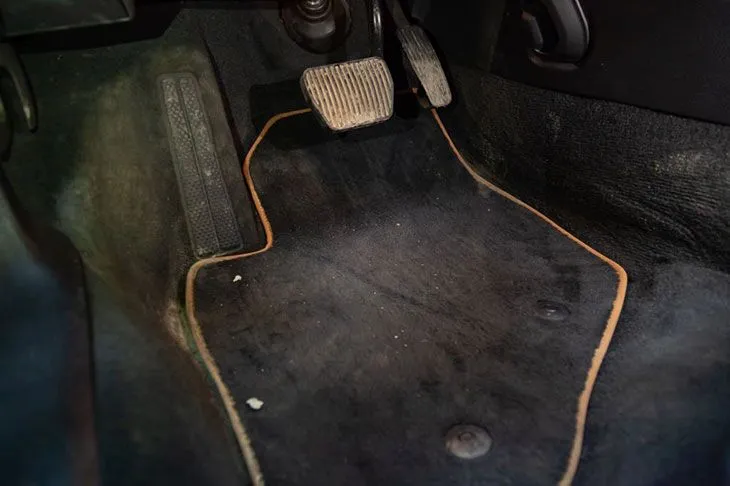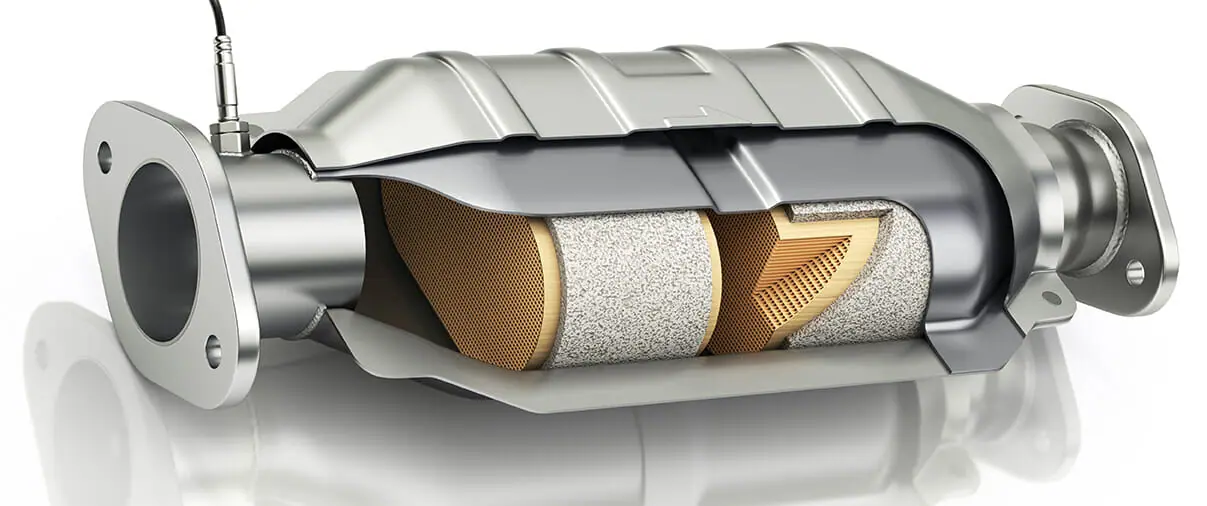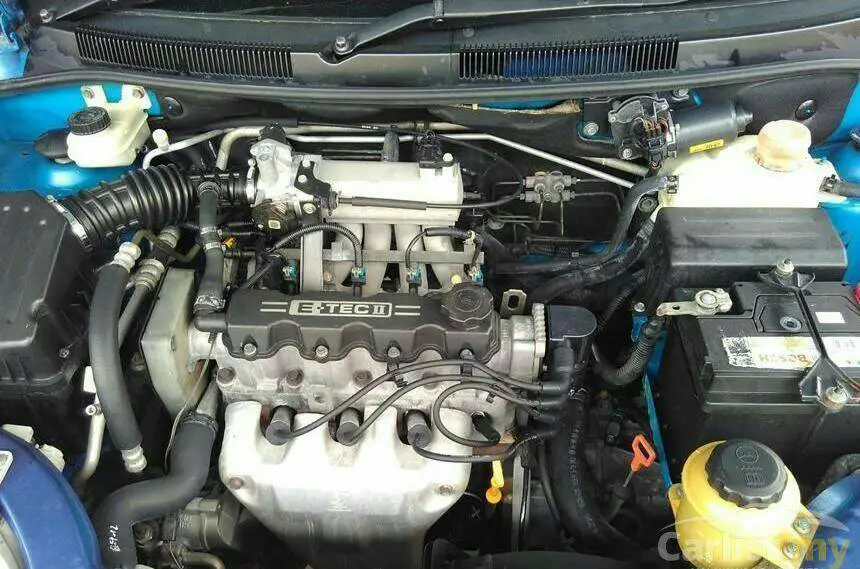When you press the brake pedal all the way down with ABS (Anti-lock Braking System), something interesting takes place.
Imagine this: You’re driving, and suddenly you need to stop quickly. As you firmly press the brake pedal, ABS kicks in to work its magic.
Instead of the wheels locking up and causing a skid, ABS helps maintain steering control.
It’s like having a smart helper in your car that prevents skidding on slippery roads or during sudden stops.
When you fully depress the brake pedal with ABS, the system rapidly pumps the brakes, allowing you to maintain control while slowing down.
It’s a safety feature designed to keep you and your vehicle out of harm’s way.
So, next time you stomp on the brakes in an emergency, remember that ABS is there to keep you on the road and in control.
When the brake pedal is fully depressed, the Anti-lock Braking System (ABS) takes center stage, playing a pivotal role in preventing wheel lock-up. This innovative system, now a standard feature in modern vehicles, fundamentally transforms traditional braking mechanisms, prioritizing safety on the road.
How does ABS prevent wheel lock-up when the brake pedal is fully depressed?
When the brake pedal is fully depressed, the Anti-lock Braking System (ABS) takes center stage, playing a pivotal role in preventing wheel lock-up. This innovative system, now a standard feature in modern vehicles, fundamentally transforms traditional braking mechanisms, prioritizing safety on the road.
-
Rapid and Controlled Brake Pulsing
ABS operates through a sophisticated process of rapid and controlled brake pulsing. Rather than applying constant pressure to the brakes, ABS reacts within milliseconds, modulating brake force dynamically.
-
Sensor Monitoring and Intervention
As the brake pedal is pressed down, ABS sensors diligently monitor the speed of each wheel. If a wheel is detected on the verge of locking up, ABS intervenes by momentarily releasing and then reapplying the brake pressure.
-
Prevention of Skidding
This meticulous control prevents skidding, a common consequence of wheel lock-up. The core objective of ABS is to maintain traction, especially in challenging conditions such as slippery roads.
-
Optimal Contact with Road Surface
By preventing wheel lock-up, the system ensures that each tire maintains optimal contact with the road surface. This, in turn, empowers drivers to steer the vehicle even during aggressive braking maneuvers.
Consider a scenario where swift and decisive braking is essential, such as in an emergency. Without ABS, slamming the brakes could result in a loss of control, particularly in adverse weather conditions.
-
Empowering Drivers in Emergencies
ABS, however, optimizes brake force, enabling drivers to steer and navigate around obstacles while coming to a rapid yet controlled stop.
In essence, ABS injects a layer of intelligence into the braking process. It functions as a responsive partner in the vehicle, constantly monitoring the speed of each wheel and making split-second decisions to prevent lock-up.
-
Cornerstone of Automotive Safety
This technology has become a cornerstone of automotive safety, significantly reducing the risk of accidents by empowering drivers to brake firmly in emergencies without compromising control.
So, the next time you find yourself fully depressing the brake pedal, take a moment to appreciate the intricate dance of ABS—an invaluable guardian on the road, diligently working to keep you and your vehicle safe.
What role does ABS play in maintaining steering control when the brake pedal is pressed all the way down?

When the brake pedal is pressed all the way down, the Anti-lock Braking System (ABS) assumes a crucial role in maintaining steering control. This function is pivotal in emergency braking situations where swift and precise steering can be the key to avoiding obstacles or collisions.
-
Prevention of Wheel Lock-Up
The primary mechanism through which ABS maintains steering control is by preventing wheel lock-up. When the brake pedal is fully depressed, ABS sensors constantly monitor the rotational speed of each wheel. If a wheel is about to lock up, ABS intervenes by modulating the brake pressure, ensuring that the wheel continues to rotate.
-
Dynamic Brake Force Modulation
ABS achieves this by employing dynamic brake force modulation. Instead of allowing the brakes to lock the wheels, ABS modulates the brake pressure rapidly and in a controlled manner. This prevents the wheels from skidding, which is crucial for maintaining the driver’s ability to steer the vehicle.
-
Traction Maintenance
By preventing wheel lock-up and subsequent skidding, ABS helps maintain traction. Traction is essential for effective steering control, especially in emergency situations where a driver may need to navigate around obstacles while braking hard.
-
Enhanced Driver Control
ABS, therefore, acts as a stabilizing force during emergency braking. It allows drivers to retain control over the steering wheel, enabling them to steer away from potential hazards even when the brakes are fully engaged.
Are there specific situations where fully depressing the brake pedal with ABS is more advantageous?
Absolutely, there are specific situations where fully depressing the brake pedal with ABS (Anti-lock Braking System) is particularly advantageous. Here are some scenarios where ABS proves to be a valuable asset:
-
Emergency Stops
In situations requiring rapid and forceful braking, such as emergency stops or sudden obstacles in the roadway, fully depressing the brake pedal with ABS is advantageous. The system prevents wheel lock-up, allowing the driver to maintain steering control and navigate around potential hazards.
-
Slippery Conditions
On slippery surfaces, like wet or icy roads, fully depressing the brake pedal without ABS could lead to skidding and loss of control. ABS intervenes in such conditions, modulating brake pressure to prevent wheel lock-up and enabling the driver to retain control while stopping.
-
Panic Braking
During panic braking, where a driver may instinctively slam the brake pedal, ABS becomes crucial. Without ABS, sudden and forceful braking could result in a skid, reducing the driver’s ability to steer away from danger. ABS prevents this by allowing controlled braking.
-
Uneven Surfaces
On uneven surfaces or roads with varying traction levels, fully depressing the brake pedal with ABS ensures that each wheel’s braking force is optimized. This is especially beneficial in off-road conditions or when navigating through areas with patches of gravel, sand, or mud.
What happens within the ABS system when the brake pedal is fully depressed, and how does it contribute to overall vehicle safety?
When the brake pedal is fully depressed with ABS (Anti-lock Braking System), a series of coordinated actions take place within the system, contributing significantly to overall vehicle safety. Here’s a breakdown of what happens:
-
Sensor Monitoring
As the driver fully depresses the brake pedal, ABS sensors continuously monitor the speed of each wheel. These sensors play a crucial role in detecting any wheel that is on the verge of locking up.
-
Rapid Brake Pressure Modulation
If a wheel is about to lock up, the ABS system intervenes by rapidly modulating the brake pressure. Instead of allowing continuous and uncontrolled pressure on the brakes, ABS adjusts the pressure in milliseconds. This prevents the wheel from locking up and avoids the onset of a skid.
-
Prevention of Wheel Lock-Up
The primary function of ABS is to prevent wheel lock-up during braking. When wheels lock up, it can result in a loss of steering control, especially in emergency situations. By preventing lock-up, ABS ensures that the tires maintain contact with the road surface, allowing the driver to steer the vehicle even under heavy braking.
-
Maintaining Traction
ABS contributes to overall vehicle safety by maintaining traction. In slippery conditions, traditional braking systems without ABS could lead to skidding. ABS prevents this by ensuring that the wheels don’t lose traction, enhancing the driver’s ability to control the vehicle during braking.
-
Optimized Steering Control
One of the key advantages of ABS is its contribution to steering control. By preventing wheel lock-up and skidding, ABS enables the driver to maintain better control over the direction of the vehicle, even during intense braking maneuvers.
-
Enhanced Stability
Overall, the actions performed by ABS contribute to enhanced stability and control of the vehicle during braking. This is particularly crucial in emergency scenarios, where the ability to stop quickly while maintaining control can be a life-saving feature.
When you fully depress a brake pedal with ABS you will feel?
When you fully depress the brake pedal with ABS (Anti-lock Braking System), you may feel a pulsating or vibrating sensation through the brake pedal. This sensation is a normal and expected part of the ABS operation and is often described as a rapid pulsing feeling.
Here’s why:
-
Pulsating Brake Pressure
ABS works by modulating brake pressure rapidly during hard braking to prevent wheel lock-up. As the system detects a wheel on the verge of locking up, it momentarily releases and then reapplies the brake pressure. This cycle repeats multiple times per second, creating the pulsating sensation.
-
Maintaining Steering Control
The pulsating sensation is designed to help maintain steering control. By preventing wheel lock-up, ABS ensures that you can steer the vehicle even under heavy braking. The pulsating feedback is an indication that the ABS system is actively working to optimize braking performance and prevent skidding.
-
Indicator of ABS Activation
The pulsating sensation serves as a tactile indicator that ABS has been activated. It’s a signal to the driver that the system is actively preventing wheel lock-up and helping to maintain stability and control during the braking process.
FAQs – When You Fully Depress A Brake Pedal
What happens if you press the brake all the way down?
When you press the brake pedal all the way down, you engage the braking system to its maximum potential. The brake system is designed to generate the maximum braking force when the pedal is fully depressed. In modern vehicles with power-assisted brakes, pressing the pedal all the way down activates the brake booster, assisting in applying strong and efficient braking force. However, it’s essential to be mindful of the road conditions and not press the brake pedal abruptly, especially in emergency situations, to maintain control over the vehicle.
What happens when you depress the brake pedal?
Depressing the brake pedal initiates the braking system, causing the brake pads to make contact with the brake discs or drums. This friction generates resistance, slowing down the vehicle. In vehicles with power-assisted brakes, depressing the brake pedal activates the brake booster, amplifying the force applied by the driver. The brake system converts kinetic energy into heat, dissipating it through the braking components. Proper brake operation is crucial for vehicle safety, and regular maintenance is recommended to ensure optimal braking performance.
What happens if you slam on the brakes without ABS?
Slamming on the brakes without ABS (Anti-lock Braking System) can lead to wheel lock-up. When a wheel locks up, it loses traction, and the vehicle may skid. This skidding can result in a loss of steering control, making it difficult for the driver to navigate around obstacles. ABS prevents wheel lock-up by modulating brake pressure, allowing for controlled braking and maintaining steering control, especially in emergency situations. Without ABS, slamming on the brakes may lead to increased stopping distances and a higher risk of skidding.
Can ABS cause the pedal to go to the floor?
No, ABS (Anti-lock Braking System) is not designed to cause the brake pedal to go to the floor. If the brake pedal goes to the floor, it typically indicates an issue with the brake hydraulic system, such as a brake fluid leak or air in the brake lines. ABS is a safety feature that modulates brake pressure to prevent wheel lock-up, but it should not cause a loss of brake pedal feel. If you experience a soft or sinking brake pedal, it’s essential to have the brake system inspected by a qualified mechanic to identify and address any potential issues.
How do you bleed an ABS module?
Bleeding the ABS module is part of the brake system maintenance, especially after replacing brake components or if air has entered the brake lines. The process typically involves using a scan tool to activate the ABS pump and valves while bleeding the brakes. Here’s a general outline:
- Ensure the vehicle is on a level surface and safely secured.
- Connect a scan tool to the vehicle’s OBD-II port.
- Follow the manufacturer’s instructions on the scan tool to activate the ABS module.
- Begin the brake bleeding process, starting with the brake caliper or wheel cylinder farthest from the master cylinder.
- Have a helper pump the brake pedal and hold it down while you open and close the bleeder valve to release air and old brake fluid.
- Repeat the process for each brake caliper or wheel cylinder, moving progressively closer to the master cylinder.
- Monitor the brake fluid level in the master cylinder reservoir and keep it topped up throughout the bleeding process.
- Once bleeding is complete, perform a final check for any leaks, and ensure the brake pedal feels firm.
Conclusion – When You Fully Depress A Brake Pedal
Getting the hang of how brakes work, whether fully pressing the pedal with ABS or thinking about how brakes operate, is crucial for safe driving.
The pulsing feeling when you press the brake pedal all the way down with ABS is a sign of a smart system in action, putting control and safety first.
It’s a clear reminder that technology, like ABS, has made emergency braking more controlled.
Whether dealing with slippery roads or sudden obstacles, ABS improves overall vehicle safety.
As we use our brakes, let’s recognize the detailed moves of systems meant to keep us safe and emphasize responsible driving habits.




